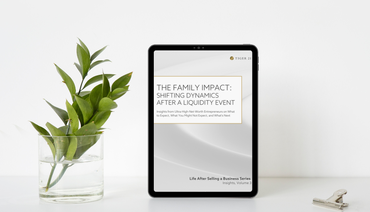Demystifying the Investing Success of the Remarkable Warren Buffett

By Michael W. Sonnenfeldt, Founder and Chairman of TIGER 21
30,000 acolytes flocked to Omaha, Nebraska to listen to 92-year-old Warren Buffett and 99-year-old Charlie Munger share their thoughts about Berkshire Hathaway, the state of the economy, the United States, and the future. This year, TIGER 21’s delegation was over 40 Members.
Most people misunderstand the nature of Buffett’s success, and, in part, that misunderstanding is what continues to fuel his mystique.
Over a truly amazing 60-year career in investing, Buffett’s returns have almost certainly been among, if not the best of any single investor in history, but only if you add: “who manages as much money as he does, as conservatively”. Given that he manages over $600 billion, with cash of over $130 billion, his performance places him among the very best.
But here is the big secret: All the “outperformance” occurred in the first 40 years, which ended 20 years ago. In the last 20 years the S&P and Berkshire have been neck and neck.
Examining Warren Buffett’s History
In the first 40 years, Buffett was managing a lot less money. Since then, he has found it impossible to outperform the S&P with so much money managed conservatively. Finding big opportunities that will move the needle is just a lot harder with so much money. Buffett can’t focus on small opportunities when managing so much money. And no matter how much wisdom these two extraordinary nonagenarians have accumulated, their performance in the last 20 years reflects the difficulty of beating the market.
Of course, die-hard fans will counter that Berkshire stock may be undervalued, relative to the S&P and therefore has more upside, but it is hard to assess that, given the 20-year history that has produced no meaningful outperformance (relative to the S&P).
But the other way to look at this, is that few managers have ever matched the S&P over the long term, unless they were managing far smaller amounts of money and/or exposing their investors to fundamentally more risk.
To give some perspective, every $1 dollar invested 20 years ago in Apple stock (on May 1, 2003) would be worth $694 today (mind boggling), while every dollar invested in Microsoft on the same day would only be worth $12.15 (Who knew?). Still the same dollar invested in either Berkshire or the S&P would be worth “just” over $7 (assuming you reinvested the S&P dividends along the way into more S&P SPYs).
Yet, $1 invested in QQQ (the NASDAQ equivalent of the S&P’s SPY focused on the technology sector) would have grown to $11.42, the winner between the three, by any measurement.
By the way, to give you an idea of how extraordinary Apple is, if you invested $1 on the day Steve Jobs died in 2011, you would have over $13 today — just since October 2011! The S&P would have returned only $3.65. Apple is Berkshire’s largest holding, and a huge part of the reason it was able to match the S&P, but then again, Apple is also a huge part of the S&P.
It is true that there are times Berkshire outperforms the S&P — like during a recession, but that advantage is lost in up markets. To be sure, that lower volatility has important benefits, but net-net, the overall performance is about the same. So, why all the hoopla about Buffett?
Key Takeaways from the Oracle of Omaha
1. Wealth is largely created by entrepreneurs who built great companies that have competitive advantages or moats, which are sustained over long periods of time. The outperformance of companies like Apple and Tesla (even with the harm done by Elon Musk’s recent Twitter and public relations activities) isn’t just a little more performance than “the market” but dramatically more (think Apple’s $694 vs. the S&P’s $7, on a 20-year horizon).
2. Despite the potential for such outperformance by picking a single winning stock, it is extremely hard to be a “stock picker” and hope you can beat the market. Few if any have, over long periods of time and particularly when managing large amounts of money conservatively. Buffett is perhaps the only one who has come close.
3. If you have owned a lot of Berkshire for a long time, you probably wouldn’t be trading it in for S&P index funds, but largely because of huge capital gains. taxes you would have to pay. Still, it might be a toss-up between the two for investing new capital. Investing in the NASDAQ (QQQ) might have the best outlook for the future, as it has handily outperformed both over the same 20-year period — but with a lot more volatility.
4. When Buffett and Munger pass on the reins to their named successors, the company’s culture is likely to be preserved, and their protegees are among the best in the world. After Buffett is gone, his successors may enhance performance with slightly updated policies (maybe less cash, and more hands-on oversight of the owned companies). It is too early to tell whether these changes will outweigh the negative impact Buffett’s and Munger’s departure will create, so in the absence of any better strategy, one could easily split future investments between Berkshire and the S&P and cover more bases, but it is a bit of a toss-up.
Lessons for the Average Investor
It is remarkable that Berkshire commands so much attention when it is essentially just a substitute for the S&P. All the glory days are behind Berkshire, unless being the only investment company to roughly match the S&P is how “glory” is defined. The much bigger story, which I learned 40 years ago in business school, is that it is virtually impossible to outperform the market over long periods of time, unless you take on higher risk, and even that can go both ways.
Most entrepreneurs who become TIGER 21 Members do so because they successfully outperform Buffett — and the S&P — with smaller amounts of money and with much higher risk, but they do it for shorter periods of time. I have earned 50% returns for 5 years or less on small amounts of invested capital but can’t hold a candle to Buffett’s long-term performance. But frankly, neither can he over the last 20 years.
Investing in the S&P (perhaps with an allocation to the technology-focused NASDAQ QQQ) is simple and easy, but you need a long time to see the cumulative results, because otherwise it feels like watching the paint dry, and there is no single superstar to marvel at (like a Buffett). In a society that believes in individuals, it is hard to fully appreciate the power of the market to allocate capital most efficiently, but the enduring strength of the S&P proves the point.
Nothing contained in this article shall constitute, or should be construed as, constituting investment advice or a recommendation by any of the author, “Michael W. Sonnenfeldt” or his company, TIGER 21.
About the Author
Michael W. Sonnenfeldt is the Founder and Chairman of TIGER 21, the premier peer membership organization for high-net-worth wealth creators and preservers, and author of Think Bigger: And 39 Other Winning Strategies from Successful Entrepreneurs. He is a serial entrepreneur, philanthropist, and political thought leader. Through his private investment company, MUUS & Company, he has holdings in alternative energy technologies. In the 1980s, he co-led the Harborside Financial Center transformation in New Jersey, the largest US commercial renovation at the time.
About TIGER 21
TIGER 21 is an exclusive global community of ultra-high-net-worth entrepreneurs, investors, and executives.
Explore the TIGER 21 Member ExperienceMember Insight Reports







